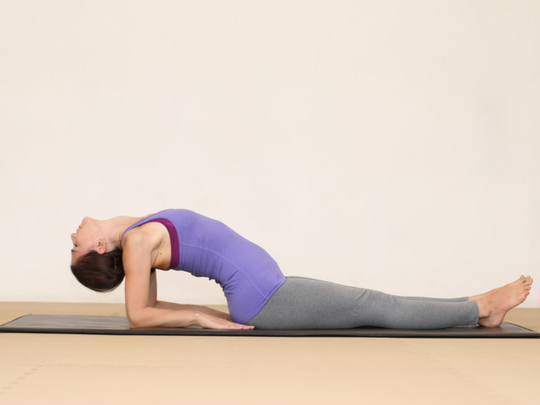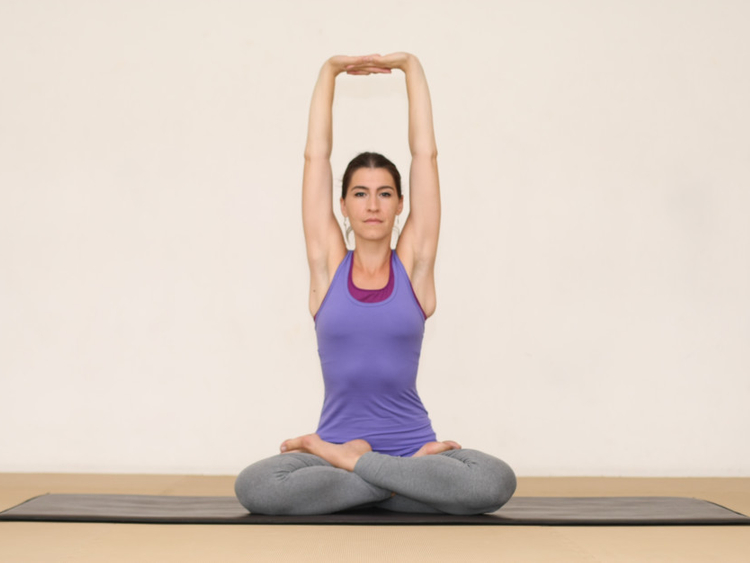
In the yogic physiology, the human system is made up of five layers or sheaths which account for different aspects of existence. The sheaths include annamaya kosha or the physical body, manomaya kosha or the mental body, pranamaya kosha or the breath/energy body, vijnanamaya kosha or the emotional/higher mental body and anandamaya kosha or the transcendental/bliss body. Physical body is made up of the food we eat, mental body is associated with thoughts, breath body is associated with prana or life force, emotional body is associated with feelings and emotions and the bliss body is associated with the soul and higher aspects of life. The koshas are also linked to the five elements that make up the human system namely earth, water, air, fire and ether respectively.
Although these five sheaths function together and affect one another, pranayama works mainly with pranamaya kosha. When a person lives in the annamaya and manomaya koshas, he is predominantly concerned with day to day survival without access to the other three koshas. Pranayama techniques work on the pranamaya kosha which acts as a bridge between the physical and non-physical aspects of the human system. Pranamaya kosha can also be accessed through simple awareness of the breath or other disciplines such as Tai Chi or Qigong.
Prana and the brain
As explained earlier (Yoga: Understanding pranayama Part 2), there are 72,000 nadis (energy channels) in the human system of which ida, pingala and sushumna nadis are located on the left, right and centre of the spine respectively. Ida and pingala are the two nadis which are directly accessible through the medium of breath and can influence the entire system.
Neurophysiological and psychological research has been able to demonstrate clearly that the two hemispheres of the brain are responsible for different abilities and characteristic modes of expression. The right hemisphere has been found to assume responsibility for the creative, intuitional and psychic side of perception which are ida nadi functions, while the left hemisphere has been found responsible for logical, rational and analytic faculties and sequential and linear modes of thought — all pingala nadi functions.
Further, the left sensory and motor cortex regions of the brain are known to be responsible for the movement and sensation of the right side of the body, while the right cortex assumes responsibility for the left side of the body. Therefore, the right side of the brain is activated when the left nostril is flowing; the left brain is activated when the right nostril flows, and whenever both nostrils flow equally, every faculty of the human brain is functioning in an optimal and integrated manner as sushumna nadi awakens. Then meditation and deeper aspects of existence are experienced.
Anulom Vilom (alternate nostril breathing) is a powerful technique by the means of which this can be achieved. All nadis can also be cleansed and revitalised which in turn revives the entire system. Having practised sahaj pranayama (easy pranayama) and kumbhak (retention) for 100 days, one can proceed to practise anulom vilom. It is also known as nadi shodhan (psychic network purification).
To be able to do anulom vilom, begin to practise holding Vishnu mudra (mudra is a gesture which directs prana in the body) for 10-20 minutes as shown in the picture.
Next week, we will look at the correct way of practising anulom vilom along with benefits.
Practice of the week
Vishnu mudra
Parvatasana
Matsyasana
Next week: Understanding Pranayama - part 5
— This is an interactive series, in which we bring you practical tips on daily living, inspired by the vision of yoga. Write in to tabloid@gulfnews.com with your questions and doubts regarding enhancing your lifestyle through yoga. For more information, call 800-YOGA (9642) or log on to artisticyoga.com














